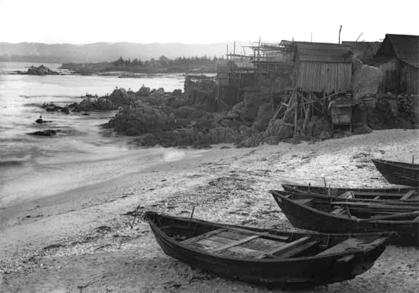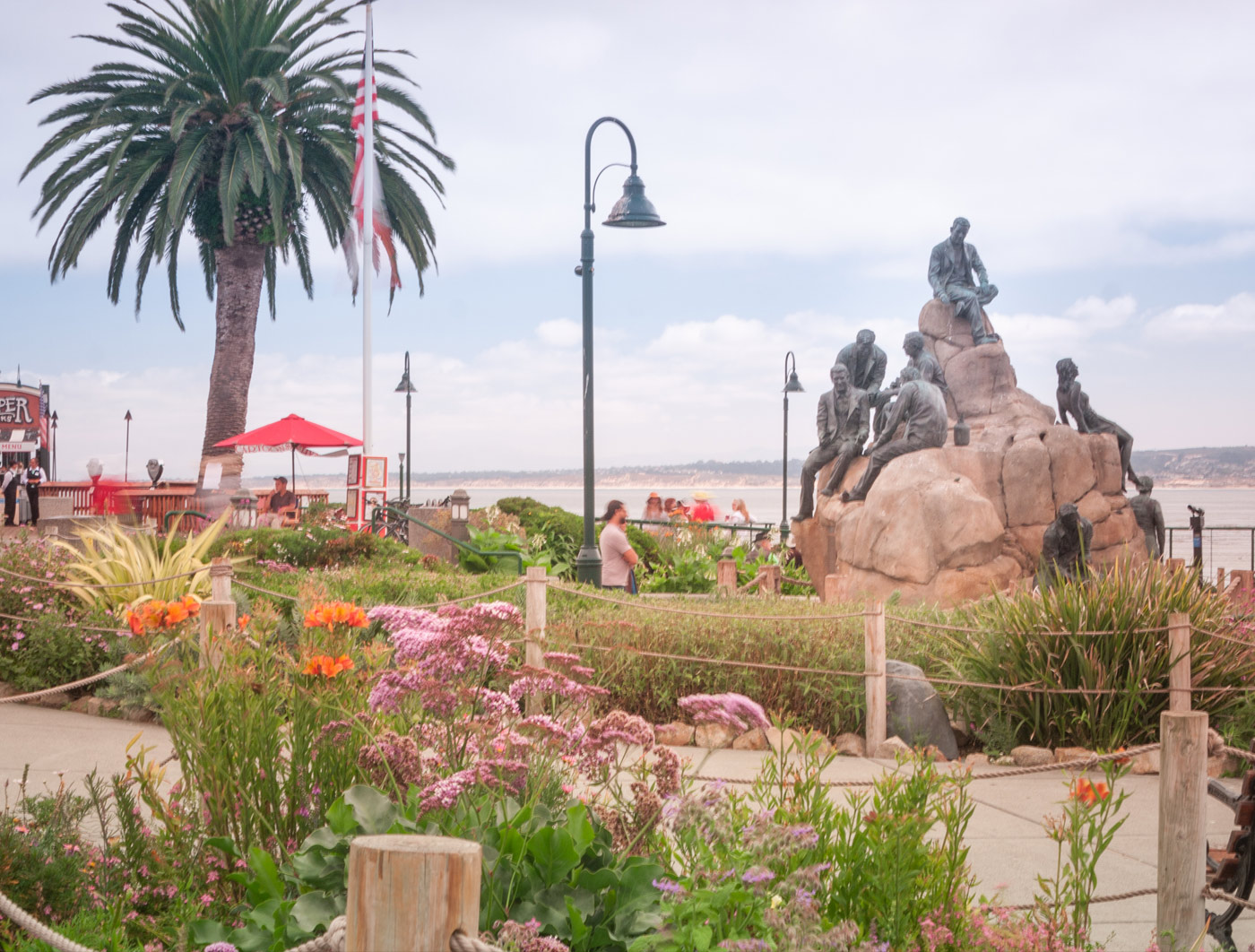
Parade of Cultures
 Cannery Row’s Immigrant Heritage
Cannery Row’s Immigrant Heritage
The Monterey Bay has been home to many diverse cultures throughout history. First inhabited by Native Americans, then settled by the Spanish, it later became home to many Chinese, Italian, Portuguese and Japanese immigrants.
Ohlone
In the 16th century, over 10,000 Native Americans lived in central California coastal areas between Big Sur and the San Francisco Bay. To most, they were known as the Ohlone tribe, but with nearly 40 different tribes in the area, each had its own name and leader. Each spoke a different language and had its own customs and traditions. The tribes lived off the abundant natural plant and animal population. Acorns were an important part of the Ohlone’s diet, boiled to make thick porridge and bread. They hunted for deer, elk, bear, whale, sea lion and otter.
Spanish
The Spanish began searching for the mythical Northwest Passage around 1542, believing it would connect the Pacific and Atlantic oceans. Although they routinely sailed along the California coast, it was almost 200 years before they attempted to establish a settlement. The Spanish built the first mission in 1770 in Monterey, a few miles from what is now Cannery Row. Construction began on the Presidio of Monterey around the same time.
Chinese
In 1814, the region experienced an influx of non-Spanish settlers, and the expansion of Monterey began. Chinese fishermen were the first to delve into the riches of the Monterey Bay. It was salmon, not sardines, that brought the original Chinese settlers here. They settled in what became known as China Point on the cove of Point Lobos in the early 1850s. When the abundance of the bay was discovered, China Point and other settlements began to grow, many consisting of stilted shanties overhanging the shoreline, with flat-bottomed fishing boats tied up at the fishermen’s back doors. By 1853, roughly 600 Chinese fishermen were trolling the bay waters.
Portuguese
Experienced Portuguese whalers also arrived in the Monterey area around the 1850s, drawn by the large population of humpback and gray whales. Whale blubber was used for many applications, including lighting the Monterey nights with torches. But the arrival of kerosene replaced whale oil by the turn of the century, and the Portuguese whalers turned to farming and fishing.
 Japanese
Japanese
Japanese immigrants began arriving in the early 1890s and were responsible for the advancement of abalone fishing in the Monterey Bay. Prior to their arrival, the only way to collect abalone was free diving, and with the chilly water temperature, it was a very dangerous profession. The Japanese hard-hat divers brought new techniques along with insulated suits and helmets. Japanese immigrants launched successful abalone canning as well as salmon and sardine fishing operations. Japanese cannery workers, specializing in the cutting operation, also became a major factor in the economic life of Cannery Row.
Italians
By the late 1800s Monterey’s European population, particularly of Italian fishermen, was exploding. The Italian fishing community became so dominant, made up largely of migrants from the fishing towns of western Sicily, that the Chinese began fishing for squid at night, when their operations did not conflict with other crews. In the early 1900s, Italian fishermen introduced the lampara net from Sicily to the Monterey fishing industry. The Italian word lampara was derived from lampo or “lightening” and meant fast haul and strong construction. The round-haul net helped revolutionize the fishing and canning industry and helped Monterey earn the designation “Sardine Capital of the World.”


